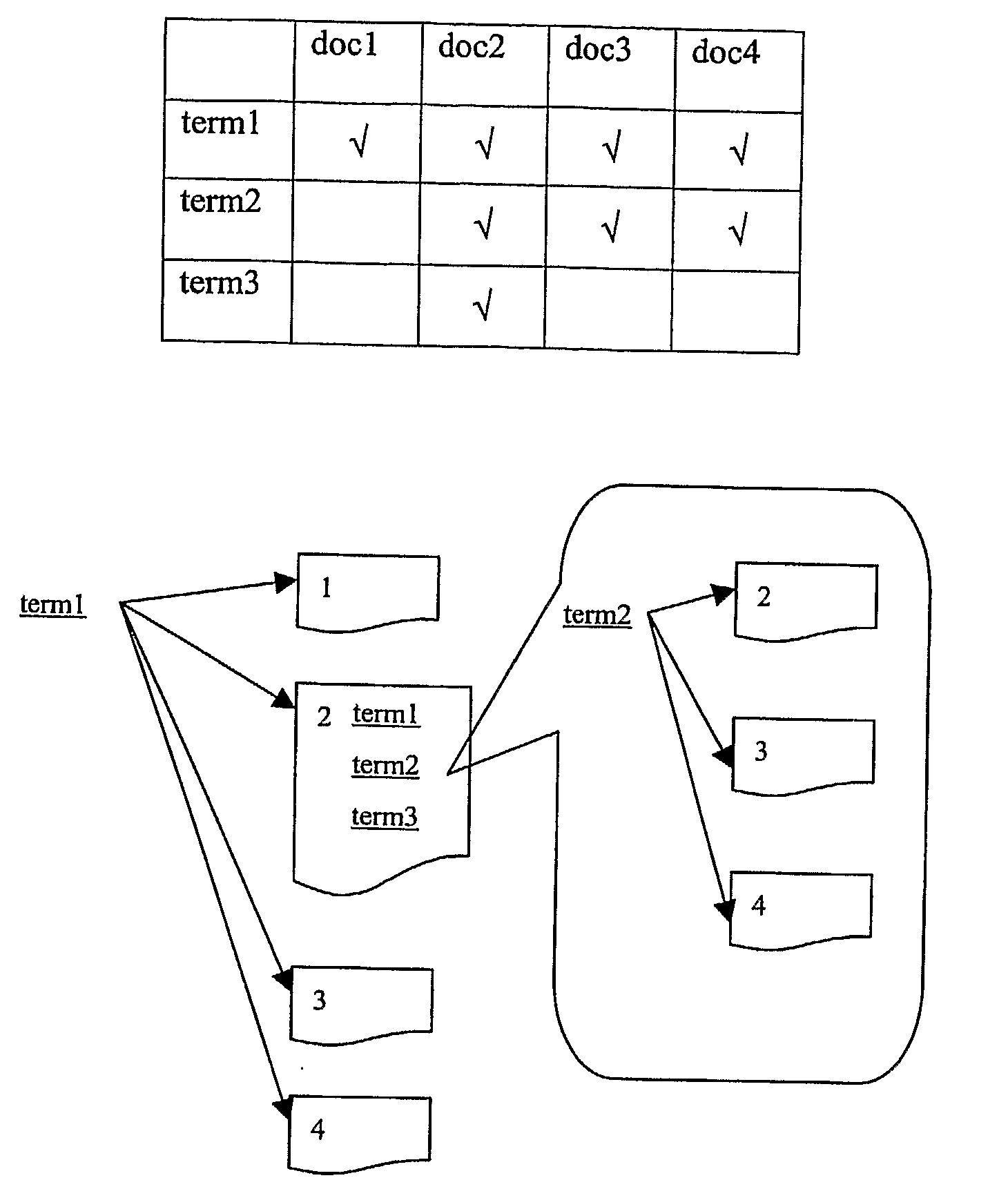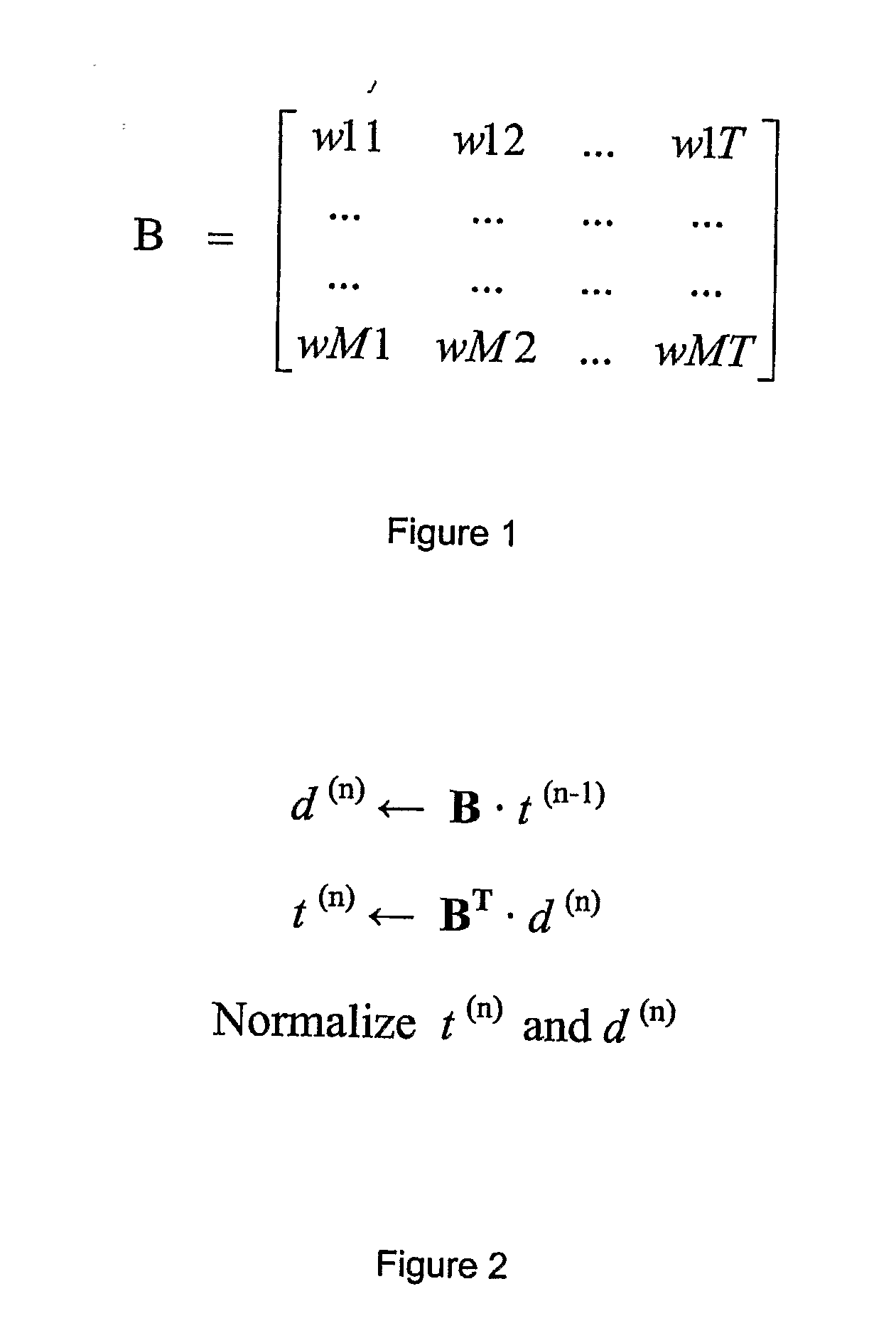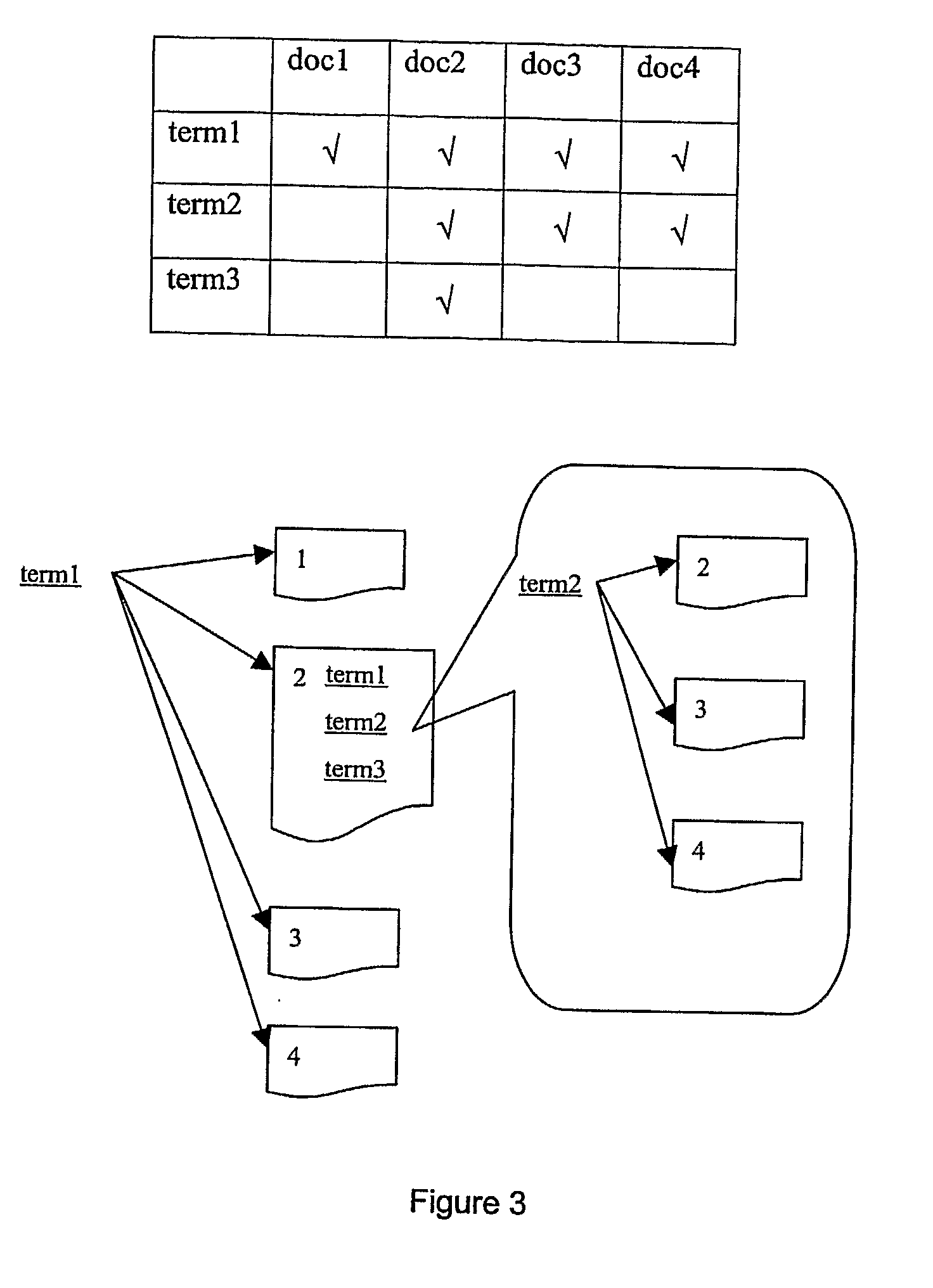Doubly Ranked Information Retrieval and Area Search
- Summary
- Abstract
- Description
- Claims
- Application Information
AI Technical Summary
Benefits of technology
Problems solved by technology
Method used
Image
Examples
Embodiment Construction
A. Doubly Ranked Information Retrieval (“DRIR”)
[0047]1. Input to DRIR
[0048]DRIR preferably utilizes as its input a set of documents represented as tuples of (term, weight). There are two steps before such tuples can be created: first, obtaining a collection of documents, and second, performing parsing and term-weighting on each document. These two steps prepare the input to DRIR, and DRIR is not involved in these steps.
[0049]A document collection can be obtained in many ways, for example, by querying a Web search engine, or by querying a library information system. One could also use a bibliographic source, where a citation is considered as a document, and citations of papers from a journal or a conference proceeding constitute a document collection.
[0050]Parsing is a process where terms (words and phrases) are extracted from a document. Extracting words is a straightforward job (at least in English), and all suitable parsing techniques are contemplated.
[0051]2. DRIR Problem Stateme...
PUM
 Login to View More
Login to View More Abstract
Description
Claims
Application Information
 Login to View More
Login to View More - R&D
- Intellectual Property
- Life Sciences
- Materials
- Tech Scout
- Unparalleled Data Quality
- Higher Quality Content
- 60% Fewer Hallucinations
Browse by: Latest US Patents, China's latest patents, Technical Efficacy Thesaurus, Application Domain, Technology Topic, Popular Technical Reports.
© 2025 PatSnap. All rights reserved.Legal|Privacy policy|Modern Slavery Act Transparency Statement|Sitemap|About US| Contact US: help@patsnap.com



